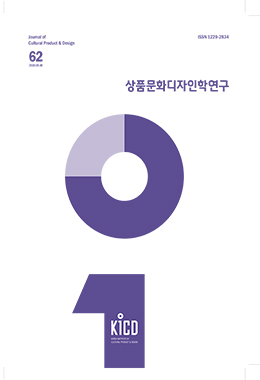4차 산업혁명 시대가 도래함에 따라 사회 패러다임에도 많은 변화가 일어나고 있다. 그중에서도 가상현실 기술이 가장 큰 주목을 받고 있는데 이는 현재 사회적 상황과도 깊은 연관이 있다. 2020년도에 들어서면서 전 세계적으로 코로나19가 확산되어 우리의 일상 속에 비접촉, 비대면 문화가 자리잡게 되었다. 전염병 예방을 위해 학교는 온라인 수업을 진행하고, 회사는 재택근무를 권장하고 있다. 뿐만 아니라 전시장, 박물관을 비롯한 문화예술 분야에서도 비대면으로 작품을 관람할 수 있는 방법을 찾고 있다. 현재까지 가상현실과 증강현실에 대한 연구는 비교적 많이 진행되었으나 이를 박물관 전시 디자인에 적용시킨 연구는 미비하다. 따라서 본 연구는 사용자의 특성을 사용자 경험 차원에서 새롭게 해석하여 가상현실 박물관 전시 디자인에서 사용자 경험요인을 확장시키는 가이드라인을 제공하는 데 그 목적이 있다. 연구 방법은 첫째, 선행연구 및 문헌들을 통해 NUI의 개념과 특성, 가상현실의 개념, 인터랙션 및 박물관에 대한 패러다임을 살펴본다. 둘째, 데이비드 딘의 전시유형에 따라 가상현실 박물관 전시 디자인의 전시 유형을 고찰한다. 셋째, 번스미트의 경험요소에 따라 가상현실 박물관 디자인을 감각, 정서, 인지, 행동, 관계로 분석한다. 넷째, 사례연구를 통하여 가상현실 박물관 전시 디자인에 걸맞은 NUI 디자인의 방향성을 제시한다. 앞선 과정을 통해 다음과 같은 연구결과를 도출하였다. 가상현실 박물관 전시 디자인은 첫째, 데이비드 딘의 전시유형으로 볼 때 ‘개념지향형’에 해당한다. 또한 대부분의 인터랙션이 핸드 컨트롤러를 이용한 기본적인 제스처로 구성되어 있다. 둘째, 감각적인 부분에서는 시각, 청각을 많이 활용하고 있으며, 현존감을 표현하는 기법으로 제작되었다. 주로 개인이 시청하는 1인칭 관람이 많았으며, 다른 사람과 소통은 불가했다. 셋째, 가상현실 박물관 전시 디자인은 신체, 몸동작, 음성 인터페이스 등의 적절한 조합과 오감을 활용한 자연스러운 인터페이스 및 인터랙션으로 디자인되어야 한다. 본 연구는 사용자 특성과 경험적 요인 차원에서 가상현실 박물관 전시 디자인의 경험적 시각을 넓히는 기초연구로서 NUI 디자인의 발전 방안을 제시하였다는 데 그 의의가 있다.
With the advent of the 4th industrial revolution, many changes are taking place in the social paradigm. Among them, virtual reality technology is receiving the most attention, which is deeply related to the current social situation. Entering 2020, the spread of Corona 19 around the world has established a non-contact, non-face-to-face culture in our daily lives. Schools conduct online classes to prevent infectious diseases, and companies recommend working from home.In addition, exhibition halls, museums, and other cultural arts fields are also looking for ways to view the works in a non-face-to-face manner. Until now, research on virtual reality and augmented reality has been relatively much progressed, but studies applying these to museum exhibition design are insufficient. we consider the types of exhibitions in the virtual reality museum exhibition design according to the exhibition types of David Dean. Third, it analyzes the virtual reality museum design into sense, emotion, cognition, action, and relationship according to Burnsmeet's experience factors. Fourth, through case studies, we present the direction of NUI design suitable for the virtual reality museum exhibition design. Through the previous process, the following research results were derived. First, the exhibition design of a virtual reality museum corresponds to a “concept-oriented” type of exhibition by David Dean. Also, most of the interactions consist of basic gestures using a hand controller. Second, in the sensational part, sight and hearing are used a lot, and it was produced as a technique to express the sense of presence.There was a lot of first-person viewing, mainly viewed by individuals, and communication with other people was impossible. Third, the virtual reality museum exhibition design should be designed with an appropriate combination of body, body motion, voice interface, and natural interfaces and interactions utilizing the five senses. This study is meaningful in that it suggested the development plan of NUI design as a basic study to broaden the empirical perspective of virtual reality museum exhibition design in terms of user characteristics and empirical factors.


